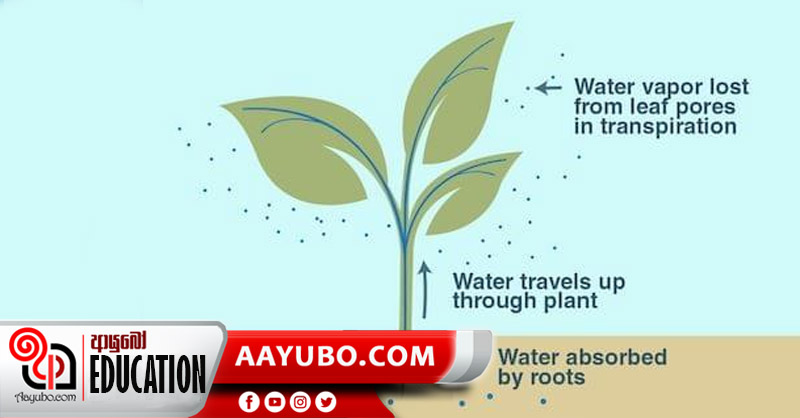Grade 8 Science: Main Biological Processes in Plants - Part 2

Transportation
This process involves in carrying,
- The raw material for the biological processes.
- The products of those processes to the required parts of the plant.
Examples:
- Transportation of air in the atmosphere to the cells of the leaf through the stomata.
- Transportation of water and minerals that are absorbed from the soil to the leaves through the root hairs.
- Transportation of food that is produced as a result of photosynthesis from the leaves to the other areas of the plant.
Basically, there are three methods of transportation in plants namely, Diffusion, Osmosis and Mass flow.
- Diffusion
This is the major process that facilitates transportation in plants. Diffusion takes place when a substance from an area of higher concentration of that substance moves to an area of lower concentration.
Examples: spreading of the smell of joss sticks, oranges when the skin is peeled off and spreading of condis particles in water.
This process takes place in several ways.
-
- Diffusion of carbon dioxide from the atmosphere to plant leaves through stomata for photosynthesis.
- Diffusion of oxygen through the stomata for respiration.
- Diffusion of oxygen through the stomata to the atmosphere.
- Diffusion of water vapor, products of respiration and carbon dioxide through the stomata to the atmosphere.
- Osmosis
This is the process in which water molecules diffuse from an area of higher water potential to an area of lower water potential through a semipermeable membrane. A semipermeable membrane allows only the specific molecules to pass through it (Example: Egg membrane). The water particles in soil are present with minerals where the root hairs of plants absorb the water particles by the process; Osmosis. Here the water particles move from the root hairs to the xylem and they are carried from one cell to another. The cell membrane located inside the plant cells is a semi-permeable membrane. This process can be observed through the experiment you did at your school laboratory, where the ink solution seemed to have gone up the stem after you dipped an uprooted balsamic plant in a container with some red ink and left it there for a few hours.
- Mass Flow
Osmosis allows the root hairs in plants to absorb soil water that possess various minerals. The absorption of those minerals require energy. So, the nutrients / food that are produced in the leaves through photosynthesis, are also carried to the necessary parts of the plant and this is done through the phloem tissues. This process where the products of photosynthesis are transported/moved along the phloem tissues in a plant can be cited as the Mass Flow.
by Mekhala Egodawele
Photo source : Internet
1586 Views








Comments